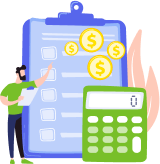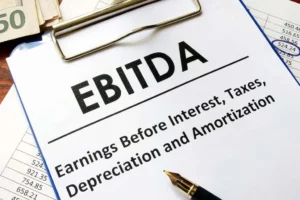In today’s competitive, fast-paced world, you have seconds to grasp the chance or prevent a danger that could change the course of the firm. You need reliable information that gives you a clear view of the situation so you may correct course and make crucial decisions on the fly. That’s when automated spend analysis becomes actual.
According to research from The Economist Group, more than 30% of senior executives surveyed said spending analysis is their primary priority for the current year. Below, we look at how reliable cost analytics tools can help you overcome challenges and streamline your procurement procedures.
Understanding Automated Spend Analysis
Spend analysis is a data-centric procedure for filtering, classifying, and processing complex expenditure data. Its main task is to allow you to achieve key goals, including cutting procurement expenditures and increasing productivity and compliance. In essence, such a procedure answers several issues that help you determine the nature of your firm’s costs and enhance its management.
- Where does the cash go?
- How much cash have we spent?
- Who are our main vendors?
- How can we improve expenditure management?
Spend analysis in procurement and other accounting tasks can be done manually with spreadsheets or special applications. Manual procedures require a lot of time and effort, especially as your firm and the number of operations grow. An automated system decreases the working hours spent on manual work, offering better information and outcomes.
Key Components of Automated Spend Analysis
Automated spend analysis is often based on synchronizing specialized software and enterprise resource planning (ERP) systems. A cost analysis system usually provides additional functionality, including cash flow forecasting and supplier management tools.
Such a cost analysis, synchronized with ERP, uses a live data stream on suppliers’ interactions. Working with such software includes the next stages.
- Data collection and integration. Expenditure information comes automatically from purchase orders and invoices. This process can be simplified with optical character recognition (OCR) and other advanced technologies to increase accuracy and minimize human involvement. After compiling the information, it is necessary to remove duplicates and create a unified system. This is crucial because information comes from various channels and often in multiple formats.
- Categorization and classification. After integration, you must classify the information into standard expense categories. At this stage, forming a logical classification combining similar costs is necessary to simplify processing and management. When classifying, you must consider direct costs, e.g., raw materials, and indirect costs, e.g., utility bills.
- Data visualization. Various visualization options help make complicated cost analysis data more straightforward and practical. They enable businesses to successfully determine tendencies, outliers, and sectors for improvement. The most popular are bar and line charts, tree maps, Pareto charts, etc.
- Reporting. The last stage involves creating detailed statements based on the processed and visualized information. Accountants use such data to determine spending models.
While the specifics of each analysis may differ, they all rely on solid underlying data. Without high-quality input, the effectiveness of any cost analysis tool is limited.
Why is Automated Spend Analysis Important?
Although many people view automated spend analysis primarily as a way to cut costs, its value extends far beyond that. It performs many functions that allow you to optimize operations, improve vendor relationships, and increase profits. Let’s discuss how analytics can change your firm.
- Optimized financial transparency. Business intelligence (BI) gives you a clear view of where your cash is going. Understanding your spending patterns helps you better allocate resources and stay within budget.
- Reliable spend forecasting. Finance teams may use the database to estimate future expenses based on current costs to plan for months or years. Procurement teams can help department heads forecast cash outflows across important categories and counterparties.
- Greater control over business expenses. You may significantly improve internal monitoring related to company expenses based on the data provided by cost analytics. Your firm may track staff costs in real-time to reduce the cash burn rate.
- Supplier management. Understanding costs improves interactions with counterparties. You may evaluate supplier activity, monitor results, and design future interactions. This enhances negotiation tactics and increases the potential for cooperation.
Spend analytics provide transparency, helping to hold your team accountable. When staff know that every dollar is being monitored, it motivates specialists to spend responsibly and inspires new financial savings initiatives.
Implementing Automated Spend Analysis
Choosing and adopting automation solutions can seem daunting, but it doesn’t have to be. Let’s discuss the primary steps you may take to simplify the procedure.
Step 1. Selecting the proper software. Such systems range from straightforward apps to comprehensive platforms that automate all stages of spend management. Explore your needs and purposes to understand which solutions are proper for your firm. You can also choose the spend analysis outsourcing by developing criteria to evaluate service providers and setting KPIs to measure performance after signing a contract.
Step 2. Setting up proper spending categories. You will need various tabs or columns in your dataset to provide the following information:
- Business Team,
- Vendor Name,
- Expense Category,
- Frequency (one-time, monthly, annual, etc.).
Your existing data sources may already include labeled expenses. Modern ERP systems and procurement tools make it easy to assign and manage these labels, allowing you to consolidate them into a streamlined set of meaningful categories.
Step 3: Train your staff. Familiarizing your staff with automated spend analysis is vital to successful implementation and maximizing the application’s benefits. Comprehensive training helps your staff gain the knowledge and skills needed to utilize the instruments and workflows effectively. This includes learning how automation affects their roles and responsibilities and researching best practices for implementing automation solutions.
Common Pitfalls and How to Avoid Them
Understanding where your cash is going helps you determine savings options, enhance purchasing procedures, and implement data-driven decision-making. However, even procurement experts can fall into pitfalls that impair the potential of their research. Let’s take a look at some common pitfalls in automated spend analysis.
- Poor database quality. The quality of the information used in cost processing plays a key role. If the information is incomplete, outdated, or inaccurate, it causes doubt on the accuracy of the results. Poor data quality makes measuring key performance indicators and analyzing procurement success difficult.
- Missing critical spending categories. Most firms have direct expenses, such as raw materials and essential services, that the procurement department controls. However, they often overlook indirect expenses, including advertising, IT services, and travel. If you exclude such categories from your cost analysis, you miss potential savings.
- Lack of stakeholder engagement. This mistake can ruin all your efforts. This is because different teams, such as finance and operations, offer innovative ideas that are important to align procurement objectives. Without their input, your procurement tactics may not fully meet the firm’s purposes.
Companies must implement accurate data and procurement policies to prevent errors. They must also invest in the proper instruments for dataset collection, risk management, and expenditure analytics.
Tips and Reminders
Automated spend analysis is not a ready-made solution to all your accounting problems, but if implemented correctly, it may bring significant benefits. Here are some rules to follow:
- Focus on specific use cases. Don’t try to do everything at once. Implement automation for targeted tasks, such as invoice matching, tail cost research, or detecting unusual expenses. Measure results regularly and scale up gradually.
- Continuously monitor and improve the process. One plan does not fit all types of businesses. Use spend information to enhance the past plan and get optimal results. Monitor all information and utilize it to your advantage. Assess which areas can be optimized and develop a plan to utilize resources more efficiently.
Remember, cost control’s effectiveness depends on the quality of the database. Monitor expenditure information, counterparty databases, and contract repositories to ensure they are accurate and current.
Final Words
Automated spend analysis is vital for firms that plan to enhance procurement and financial performance. Cost visibility, expenditure forecasts, and effective vendor relationships help companies make more rational decisions and optimize work. BooksTime specialists help firms control expenses and maintain competitiveness. As procurement challenges grow, having the expert advice and right tools in place is the key to staying efficient, cost-conscious, and prepared for what’s next.


















